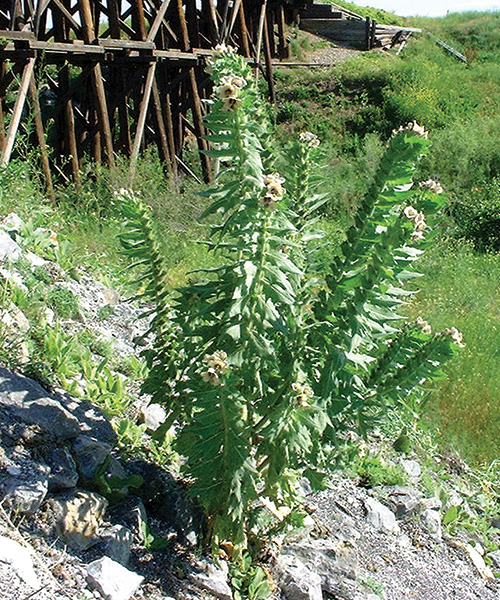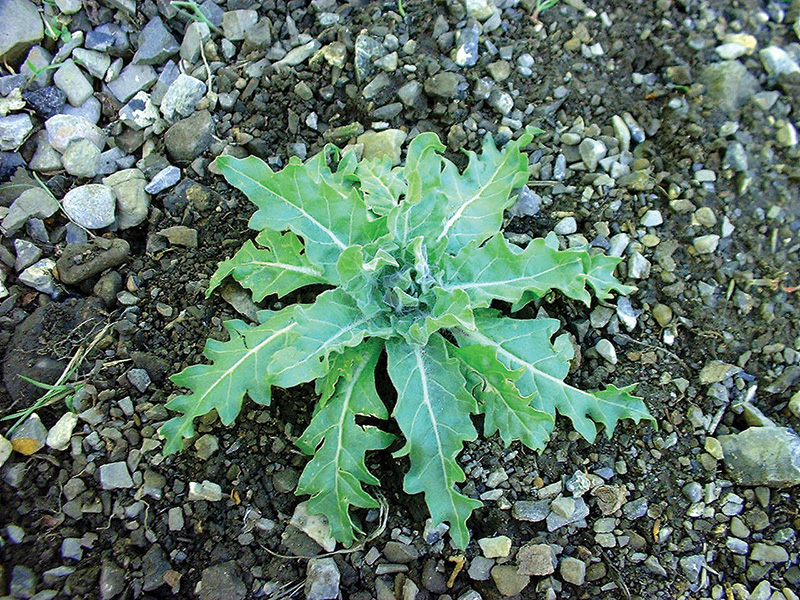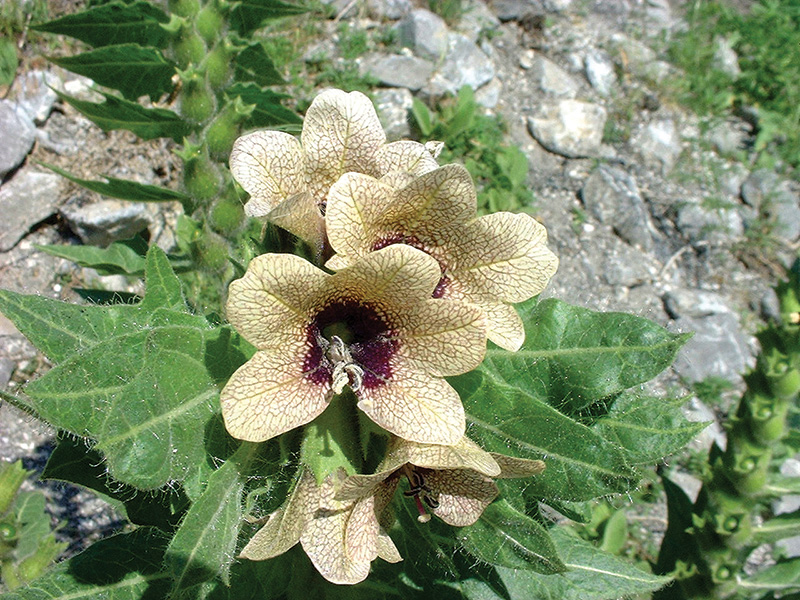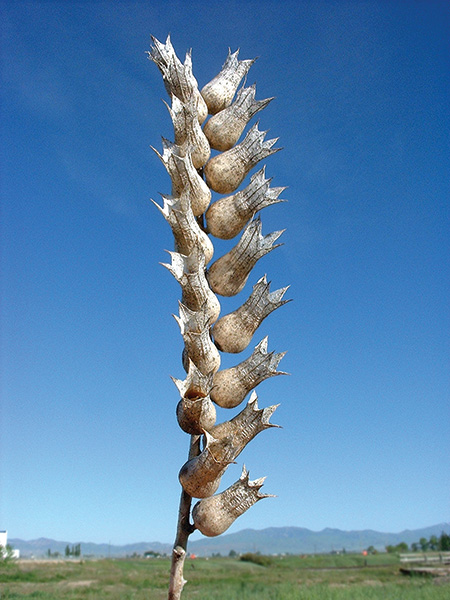Stem
- Up to 3 ft. tall, branched and covered with long, sticky hairs

Black henbane plant
Leaves
- Alternate, lance-shaped to oblong, 2-8 in. long and covered with short, sticky hairs; veins are prominent and pale; edges (margins) are lobed to toothed; lower leaves have a short stem (petiole), upper leaves have NO leaf stem

Black henbane rosette
Flower
- Funnel-shaped with a purple center; 5 fused, greenish-yellow petals with purple veins; arise from leaf axils along upper part of stem
- Seed pods are pineapple-shaped, 1 in. long and covered with long, sticky hairs; open end has 5 lobes; contain many small, dark seeds

Black henbane flower
Other
- Grows best on open sites with well-drained soils; often infests roadsides, waste areas, field borders and pastures; known to occur in Clark, Elko, Eureka, Lincoln, Nye and White Pine counties
- Annual or biennial; reproduces by seed
- Toxic to humans and livestock but rarely consumed by animals due to foul odor and taste

Black henbane seed head
Control
- Mowing, tillage, digging and hand-pulling prior to seed production are effective; burning dry, mature plants can kill seed
- Apply 2,4-D or dicamba post emergence; chlorsulfuron, metasulfuron or picloram pre- or post emergence
Blecker, L., Creech, E., Dick, J., Gephart, S., Hefner, M., Kratsch, H., Moe, A., Schultz, B.
2020,
Nevada Noxious Weed Field Guide – Black henbane,
Extension, University of Nevada, Reno, Field Guide


